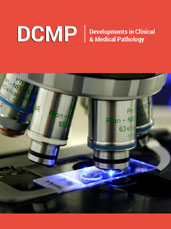Significant of Antimullerian Hormone (AMH) as Fertility Marker by Mohd Nizar Battikhi* in Developments in Clinical & Medical Pathology_ Journal of Medical Pathology

Introduction
AMH
is defined as: “Anti-mullerian hormone, it is a protein released by the ovaries
that start the growth of an egg in the ovaries and is related to the
development of follicles in the ovary. AMH levels correspond to the number of
antral follicles, that can be used to indicate the number of eggs available in
the ovaries [1,2]. It is virtually undetectable but increases gradually until puberty
and remains relatively stable through the reproductive period [3,4]. A very low
level of AMH may indicate poor ovarian reserves. A very high level of AMH may
correspond to PCOS. One of
the best uses currently of the AMH test is the ability to titrate fertility
medications based on ovarian reserve and the ability to differentiate between
polycystic Ovary Syndrome (PCOS) and those potential donors with a PCOS like
ovarian response. By utilizing AMH, those woman with higher numbers may
stimulate faster on less fertility medication and it can help decrease hyper
stimulation in the high AMH and basal antral follicle count donors [1].
Level
of AMH hormone corresponds to the number of eggs a woman has left in her
ovarian reserve. That decline with age, however, not every woman is borne with
the same number of eggs or loses them at the same rate [5]. There are some
factors influence ovarian reserve such as genetics, exposure to chemotherapy,
radiation and some medical conditions [5]. AMH detection is very good test
because it indicates some information about biological clock, where no
reliable test give such information before. [5]. AMH can be tested on any day
of the menstrual cycle and It’s levels correlate with the number of oocytes
retrieved and treatment can be individualized for optimal cycle [6-8], although
level variation between different blood samples for the same patient was
reported during the same menstrual cycle especially in young patients [9,10]
never the less AMH can still show 80% sensitivity and 93% specificity in
predicting poor ovarian response at random blood test [11] and It’s levels
correlate with the number of oocytes retrieved and treatment can be
individualized for optimal cycle.
https://crimsonpublishers.com/dcmp/fulltext/DCMP.000523.php
For
more articles in Journal of Medical
Pathology,
Please
click on below link: https://crimsonpublishers.com/dcmp/



No comments:
Post a Comment